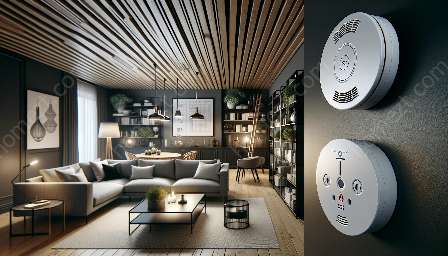Ensuring the safety and security of your home is a top priority for every homeowner. One of the crucial components of home safety is the presence of smoke detectors and fire alarms. These devices are designed to provide early warnings in the event of a fire, allowing you to take necessary precautions and evacuate if required.
The Basics of Smoke Detectors
Smoke detectors are essential for detecting the presence of smoke, which signals a potential fire in its early stages. There are two primary types of smoke detectors: ionization and photoelectric detectors.
1. Ionization Smoke Detectors
Ionization smoke detectors contain a small amount of radioactive material between two electrically charged plates, which creates an ionization chamber. When smoke enters the chamber, it disrupts the flow of ions, triggering the alarm.
2. Photoelectric Smoke Detectors
Photoelectric smoke detectors utilize a light source and a photoelectric sensor. When smoke particles enter the chamber, they scatter the light, causing it to hit the sensor and activate the alarm.
The Function of Fire Alarms
Fire alarms are interconnected devices that work alongside smoke detectors to provide audible and visual alerts in case of a fire. These alarms typically consist of several components, including a control panel, initiating devices, notification appliances, and power supplies.
1. Control Panel
The control panel serves as the brain of the fire alarm system, receiving signals from detection devices and activating notification appliances.
2. Initiating Devices
Initiating devices can include smoke detectors, heat detectors, or manual pull stations. When these devices detect a potential fire, they send signals to the control panel.
3. Notification Appliances
Notification appliances are the devices that provide the audible and visual alerts to occupants of the building. These can include bells, horns, strobes, or speakers.
4. Power Supplies
Fire alarms are typically connected to the building's electrical system but also feature backup power supplies, such as batteries, to ensure they remain operational during power outages.
How They Work Together for Home Safety & Security
Smoke detectors and fire alarms are critical components when it comes to protecting your home from the devastating impact of fires. When smoke is detected, the smoke detector sends a signal to the fire alarm, which triggers the alert system, allowing occupants to take appropriate action swiftly.
By understanding the intricate workings of smoke detectors and fire alarms, homeowners can appreciate the importance of regular maintenance and testing to ensure these devices remain fully operational at all times.



